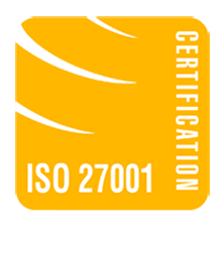
Are the existing solutions effectively providing visibility over your operations?
A survey by Statista found that the biggest challenge for global supply chain executives was visibility (21.8%) in 2018. This is more true today than it was 5 years ago, which has made it even more complicated for decision-makers to coordinate well enough to manage their demand and supply equilibrium and meet their business goals.

To tackle the issue of visibility, concepts like Sales and Operations Planning (S&OP) and Supply chain Control Tower came into existence a long time ago.
With the benefits of hindsight, what are these solutions and their pros and cons?
Sales and Operations Planning (S&OP)
Gartner defines S&OP as a medium-term process that looks on the horizon between 3 and 18 to 24 months into the future. By tackling essential issues in advance, planning managers can ensure that things are done on time and cost-effectively.
This process combines data from all departments, like sales, marketing, operations, supply chain, finance, etc. Every month, departmental decision-makers meet to evaluate the performance of their departments and cross-check the KPIs to adjust the strategies if required.
Supply chain Control Tower
Gartner defines a supply chain control tower as a concept that results in combining people, processes, data, organization, and technology. Control towers capture and use (close to) real-time operational data from across the business ecosystem to provide enhanced visibility and improve decision-making.
The idea is to capture and use data to provide enhanced real-time visibility and in-depth analysis. This can enable better short and mid-term decision-making aligned with strategic organizational objectives.
Are these solutions relevant anymore?


Even though S&OP and Supply Chain Control Tower were effective, they are not relevant anymore to handle complex disruptions and quick decision-making.
S&OP runs on a horizon of 3 to 18 months but does not consider decisions to be taken on a shorter horizon, whereas demand and supply fluctuate day to day. Further, S&OP is labor-intensive to provide correct simulation for effective decision-making.
On the other hand, Supply Chain Control Tower promised end-to-end visibility. In reality, it is limited to certain stakeholders. Similar to S&OP, Control Tower is highly labor intensive, which decreases productivity and cost-effectiveness.
With the shortcomings of these solutions, businesses are creating digital twins to tackle the problem of volatility efficiently and make supply chains agile. According to Forbes, the digital twins market will rise by 40%. Manufacturers are aligning with these technologies to improve their decision-making and supply chain resilience. Is it the correct time to shift to a better solution?
Discover in our latest white paper, why S&OP and Supply Chain Control Tower can be replaced with a better existing solution to improve visibility.

E-commerce, Ecology, and Continuous Improvement
Explore the economic impact of poor retail inventory management & a French law on unsold goods, with e-commerce’s ecological shift.

E-commerce trends: Tips by Jeremie Serout!
What are the latest e-commerce trends and best practices in e-commerce? Jérémie Serout, Sales Manager at parcelLab is sharing tips and customer stories with us!

Convenience and the E-commerce Supply Chain
Explore how the e-commerce landscape has evolved, driven by increasing complexity, rising consumer expectations, and global competition.

